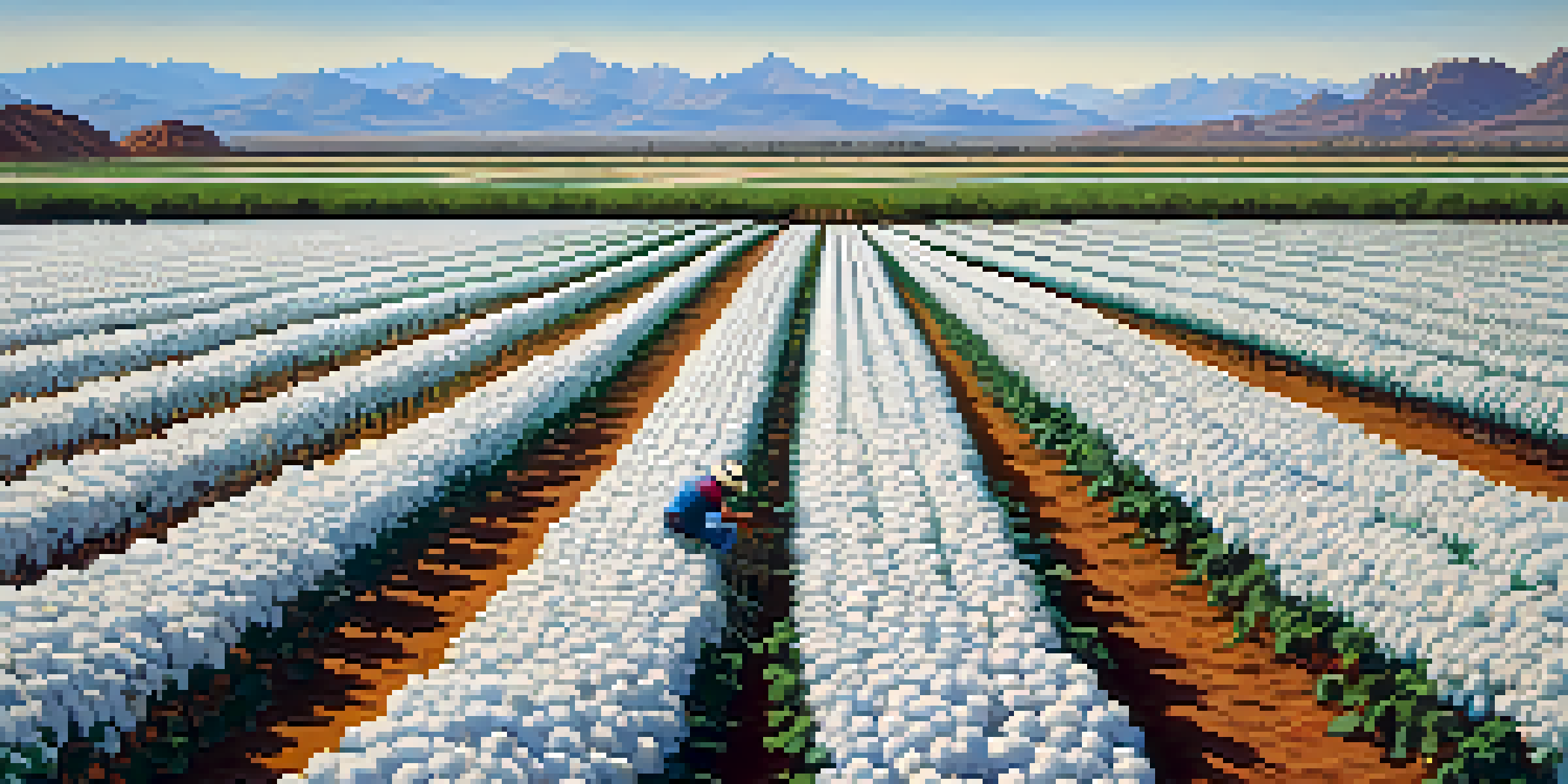Arizona's Role in Southwestern Agriculture and Food Culture

Historical Roots of Agriculture in Arizona
Arizona's agricultural history is rich and complex, dating back thousands of years. Indigenous peoples such as the Hohokam developed advanced irrigation systems that allowed them to cultivate crops like maize, beans, and squash in the arid desert. These early practices laid the groundwork for modern agriculture in the state, demonstrating the ingenuity and resilience of its inhabitants.
Agriculture is the foundation of our economy and culture, and it is vital that we preserve and innovate in this sector.
As European settlers arrived in the 19th century, they introduced new farming techniques and crops, expanding the agricultural landscape. This blending of cultures and practices has created a unique agricultural identity that continues to evolve today. The state's diverse climate also allows for a wide variety of crops to thrive, from citrus fruits to cotton.
Thus, the historical roots of agriculture in Arizona not only shaped the state's economy but also its cultural identity. Understanding this history provides insight into the rich tapestry of food culture that defines the Southwestern United States.
Key Crops That Define Arizona's Agriculture
Arizona is known for its production of several key crops that play a vital role in both local and national markets. Cotton, for instance, thrives in the state's warm climate, making Arizona one of the top cotton-producing states in the country. This crop significantly contributes to the economy and supports countless jobs across the agricultural sector.

In addition to cotton, Arizona's climate is ideal for growing a variety of fruits and vegetables, including lettuce, citrus, and peppers. The state's unique geography and irrigation practices allow farmers to produce high-quality crops year-round. This bounty not only feeds local communities but also supplies fresh produce to markets across the nation.
Rich Agricultural History
Arizona's agriculture has deep roots, shaped by indigenous practices and the evolution of farming techniques over centuries.
These key crops are essential not just for their economic impact, but also for their role in the state's food culture. They highlight the importance of local agriculture in shaping the culinary landscape of Arizona and beyond.
Irrigation Innovations in Arizona Agriculture
Irrigation is crucial for agriculture in Arizona, given its desert climate and limited rainfall. The state has pioneered various irrigation techniques, such as drip irrigation, which conserves water while maximizing crop yield. This innovation has allowed farmers to thrive in an environment that might otherwise be inhospitable to large-scale agriculture.
Farming is not just a job; it's a way of life that connects us to the land and to each other.
The advancements in irrigation technology not only boost productivity but also promote sustainable practices. By using water more efficiently, farmers can reduce their environmental impact and ensure that resources are available for future generations. This commitment to sustainability is an integral part of Arizona's agricultural identity.
Irrigation innovations have reshaped Arizona's agricultural landscape, enabling the cultivation of diverse crops and supporting local economies. These practices underscore the state's role as a leader in modern agricultural techniques, influencing farming methods across the Southwestern United States.
The Impact of Climate on Arizona's Agriculture
Arizona's climate is characterized by hot summers and mild winters, which significantly influences agricultural practices. While the heat can pose challenges, it also presents opportunities for growing heat-tolerant crops that thrive in these conditions. Farmers have adapted by selecting varieties that not only withstand the heat but also produce high yields.
However, climate change is increasingly affecting agriculture in Arizona. Fluctuating temperatures and unpredictable rainfall patterns can disrupt traditional farming cycles, forcing farmers to reassess their strategies. As a result, many are turning to more resilient farming techniques to mitigate these impacts.
Key Crops Drive Economy
Cotton, fruits, and vegetables are essential to Arizona's agricultural success, significantly contributing to both local and national markets.
Understanding the climate's role in shaping agriculture helps to appreciate the adaptability of Arizona's farmers. Their ability to innovate in the face of environmental challenges is a testament to the state's agricultural spirit and resilience.
Cultural Influences on Arizona's Food Scene
Arizona's food culture is a delightful fusion of Native American, Mexican, and Western influences. This culinary melting pot is reflected in dishes such as tacos, enchiladas, and fry bread, which showcase the region's rich heritage. These foods not only nourish the body but also tell stories of the diverse cultures that have settled in the area.
As the state's agricultural landscape evolves, so too does its food culture. Local ingredients are increasingly being celebrated in restaurants and markets, highlighting the connection between farm and table. Events like farmers' markets and food festivals further promote this relationship, fostering a sense of community around local agriculture.
The cultural influences on Arizona's food scene illustrate how agriculture and culinary traditions are intertwined. By embracing this diversity, Arizona continues to develop a unique and vibrant food identity that attracts both locals and visitors alike.
Challenges Faced by Arizona Farmers Today
Despite its successes, Arizona agriculture faces numerous challenges that threaten its viability. Water scarcity is a pressing issue, as the state relies heavily on underground aquifers and river systems that are under constant strain. Farmers must navigate these limitations while finding sustainable ways to manage water resources.
Additionally, market fluctuations and trade policies can impact the profitability of crops, leaving farmers vulnerable to economic shifts. Many are adapting by diversifying their operations, exploring organic farming, and engaging in direct-to-consumer sales to create more stable revenue streams.
Sustainability Challenges Ahead
Water scarcity and climate change present significant challenges, prompting farmers to innovate and adapt for a sustainable future.
These challenges highlight the resilience and adaptability of Arizona's agricultural community. By facing these obstacles head-on, farmers continue to play a crucial role in sustaining both the economy and the rich food culture of the region.
The Future of Agriculture in Arizona
Looking ahead, the future of agriculture in Arizona is filled with both promise and uncertainty. Innovations in technology, such as precision agriculture and vertical farming, offer exciting possibilities for increasing efficiency and sustainability. These advancements could help farmers produce more with less, addressing some of the challenges posed by climate change and resource scarcity.
Moreover, the growing interest in local and organic foods has the potential to reshape Arizona's agricultural landscape. Consumers are increasingly seeking out fresh, locally-sourced products, which encourages farmers to adapt their practices to meet this demand. This trend could foster a stronger connection between farmers and the community, enhancing the overall food culture.

Ultimately, the future of agriculture in Arizona will depend on the collaboration between farmers, policymakers, and consumers. By working together, they can create a sustainable agricultural system that not only supports local economies but also preserves the unique food culture of the region.